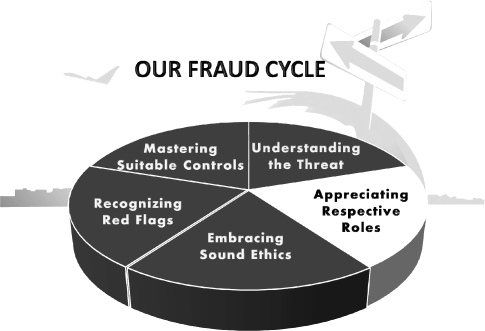5
Fraud Smart Roles and Responsibilities
In the first part of the Fraud Smart cycle we established that there is a worrying threat of fraud that needs to be addressed and that we all have a role in this matter. Let’s take another look at the Fraud Smart cycle, which covers five key aspects of helping non-specialists get to grips with fraud at work. This is repeated in Figure 5.1.
Figure 5.1 The Fraud Smart cycle.

This chapter sits within the second part of the Fraud Smart cycle, Appreciating Respective Roles, and covers the need to appreciate our role and that of others in responding to the threat of fraud.
WHAT CAN GO WRONG?
It is just not good enough to employ people and put them to work without thinking through the damage they could do if they were dishonest. Frauds happen when controls fail and someone takes advantage of a situation in which no one bothers to raise concerns about poor controls.
We can consider the way problems are able to arise by looking at two brief illustrative case studies taken from the UK and the USA. The first involved an IT company.
CASE STUDY
A company director says that he was nearly forced to lay off staff after being ripped off by one of his salesmen. Extra checks have now been put in place to ensure that the company is never defrauded again, after one of its salesmen pleaded guilty to 12 counts of fraud, one charge of theft and one of abuse of position. ...

